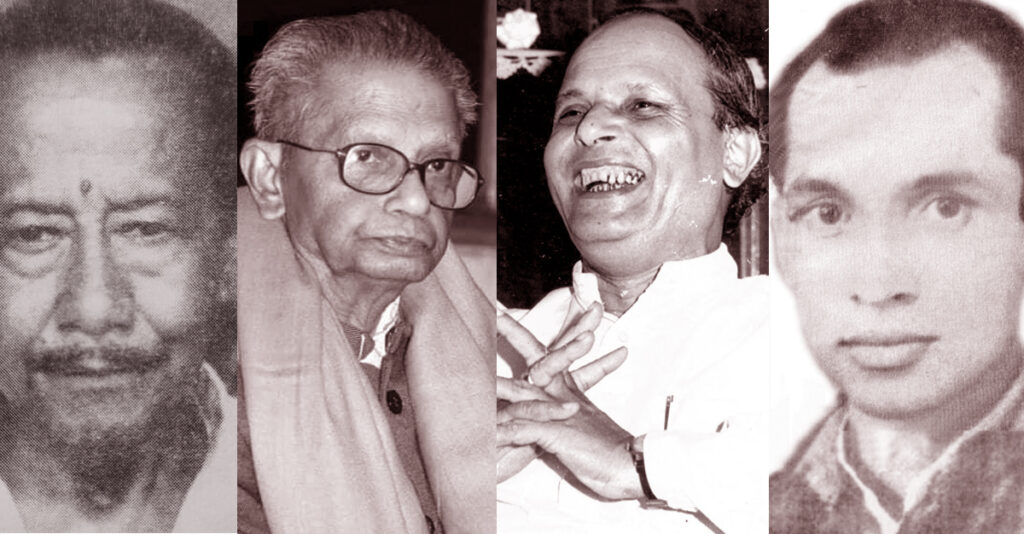Dr. Ananda Bormudoi

In the Preface to Kuri Shatikar Asamiya Kabita Nilmani Phookan writes: “A new awareness and boldness came to the Jayanti poems of the forties in their language, tone and themes but most of the poems were not aesthetically satisfying. Anti-romantic political and social consciousness of the Jayanti poets lacked in adequate aesthetic sense. Amulya Barua, a possessor of unquestionable poetic power, at that time was just a budding talent.” (p.4) Mr. Phookan does not object to the claims of politics on poetry but he wants socially committed poetry to be aesthetically satisfying. In post independence period the stream of socially committed poetry runs parallel to the stream of modernist poetry but the best of both the streams share some common qualities in structuring thoughts and feelings. Concentration, use of images, avoidance of vague generalities are some of the shared qualities. Any fair minded reader, however, will admit that socially committed poetry, in most cases, is prosaic statements of political philosophy. The best poems of Amulya Barua, Dhiren Dutta, Ram Gogoi, Amalendu Guha, Keshab Mahanta, Birendra Kumar Bhatacharyya, Nalinidhar Bhattacharyya, Mohankrishna Misra, Abani Chakravorty, Rafiqul Hussain, Jatin Borgohain and a few others, however, are a class apart. In the Assam context, these socially committed poets are also modern as they brought into poetry ideas of social science and Marxism. They wrote poetry with ideas and not words. What essentially differentiated these poets from the modernists was their belief that poetry could be a weapon of social change.
In Sagartalir Shankha, edited by Dr. Hiren Gohain, Nilmani Phookan narrates the backdrop experience of his poems and says: “Poetry is a thing of rasa. I am helpless if someone asks for the meaning straight away. The moon can only be pointed at. One who loves poetry takes initiative to explore the substance of beauty in a poem, its inherent clear wave of music.” (p. 125, Translated) What Mr Phookan says here is very close to a modernist definition of poetry. The poetic problem of finding out meaning straight away is a problem with all modernist poetry. The poet can only point at the moon, suggest and drop hints. Juxtaposed images discontinuous in time cannot be reduced to logical statements. Mr. Phookan’s statement approximates poetry to music and this is obviously an influence of French symbolism. The French symbolists approximated poetry to music. Edgar Allan Poe, who was an ideal for the French symbolists, said: “I know that indefiniteness is an element in true music – I mean the true musical expression. Give to it any undue decision, imbue it with any very determinate tone, and you deprive it at once of its ethereal, its intrinsic and essential character. You dispel its luxury of a dream. You dissolve the atmosphere of the mystic upon which it floats. You exhaust it of its breath of fairy. It now becomes a tangible and easily appreciable idea, a thing of the earth, earthly.” (Robert Gibson, Modern French Poets on Poetry: 143) Indefinite, ethereal, dream like and mystic atmosphere is not uncommon in the modernist Assamese poetry of the fifties and sixties. Mr. Phookan has himself written a number of poems in which the process of consciousness of the poet manifests in his subjective response to an object which recurs as a symbol. We can take an example: “How far is it/From where/The eagle is flying/Do grass and reeds/Hide there/A shoal of fishes with golden fins/In whose eyes do they jump/The fishes with golden fins/As the eagle comes flying/ In whose tears do the fishes burn/As the eagle comes flying.” (Phuli Thaka Suryamukhi Phultor Phale) The images and the symbols reveal here a process of consciousness as the subjective response of the viewer manifests in the symbol of the hunting bird and the alarm and death of the shoal of fishes. (Contd.)
Also read: Post Independence Assamese Poetry – Part 4
Also read: Post Independence Assamese Poetry – Part 3
Also read: Post Independence Assamese Poetry – Part 2
Also read: Post Independence Assamese Poetry – Part 1